Have you ever heard people say, “cold email outreach doesn’t work?” Some sales professionals even think it’s all about building an online brand buyers would come to on their own.
But here’s the truth: cold email does work and is definitely alive. According to reports, 49% of sales reps consider email the best sales channel, and 77% of buyers prefer communication via email to other alternatives.
The reason why some sales reps don’t see the positive outcomes is simple: while the tool remained the same, buyers have gained some new habits over the years.
As a founder of GrowthMate, a relationship-based link-building agency, I’ve sent and analyzed the performance of thousands of emails to see what works for today’s market.
And this article is here to help you embrace new skills and skyrocket your email outreach performance.
I’m here to help you embrace these habits and skyrocket your email outreach performance.
Let’s dive right in!
Why Improve Your Email Outreach Performance?
Email outreach is your trusted partner in building long-term relationships with your clients, increasing visibility for your brand, and converting more potential clients into profitable opportunities.
But it’s only a great opportunity once you know how to launch email outreach campaigns that speak directly to your clients (and, preferably, don’t annoy them).
What are the results of the outreach email done right?
- Higher open rates
- Increased click-through rate
- Better conversion
All of the points above come down to the main goal of any business out there: drawing your audience’s attention to the brand and closing more deals.
So, if we were to summarize the importance of email outreach performance in one sentence, it would go like this:
The more optimized your campaigns, the more revenue you’ll see in the future.
Why Email Outreach Often Fails?
It’s important to note that there’s no magic formula for outreach email marketing that gets your clients every single time.
A perfectly fine campaign can perform better or worse regarding the countless external factors (including timing or sudden internal changes in your client’s business).
But there are certain patterns that seem to appear every time we talk about email outreach. They include:
Betting on quantity
When you chase numbers, it’s hard to pay attention to the quality of email lists, message relevance, or personalization. And these aspects really matter for your reputation and the future relationship with your client.
Lack of personalization
Whether you don’t know much about your client or you don’t want to use the data you have, the outcome is always the same: Your clients don’t care about an email that doesn’t resonate with them.
On average, a C-level executive at a mid-sized company scans through a hundred emails per day, and there are even more emails for larger accounts. If your email is not tailored to their needs, busy executives won’t bother to reply.
Non-optimized emails
Your buyers are used to certain email formats, including white space, short sentences, or account information in their signature.
When companies don’t test how their emails look in the inbox (both from desktop and mobile), they end up selling walls of text with poor formatting, strange images, and a lack of details.
Poor preparation
Email outreach is tricky: from legal compliance to domain warm-up, the preparation stage is what makes your campaign different from messages that land in spam.
If you rush into the campaign without a thorough check-up, you’re losing your chance at getting a client to a technicality.
9 Tips for Skyrocketing Your Email Outreach
Know your audience
The most important part of email outreach campaigns is not about email at all. The foundation for great campaign performance is knowing the ins and outs of your target audience. In this context, hiring a virtual assistant can be a strategic move. An experienced assistant can manage the intricacies of these campaigns, from audience research to personalizing communications, ensuring that your outreach efforts are both efficient and effective.
Why does it matter?
Let’s look at the numbers:
Personalized and relevant emails get a 41% higher click-through rate.
So, if you know your buyer persona, what language they use, and what pains they have, you also know the answer to how to increase click rate in email marketing. Because your buyers will pay attention to you.
Just look at these outreach emails examples and think about which one you’d open:

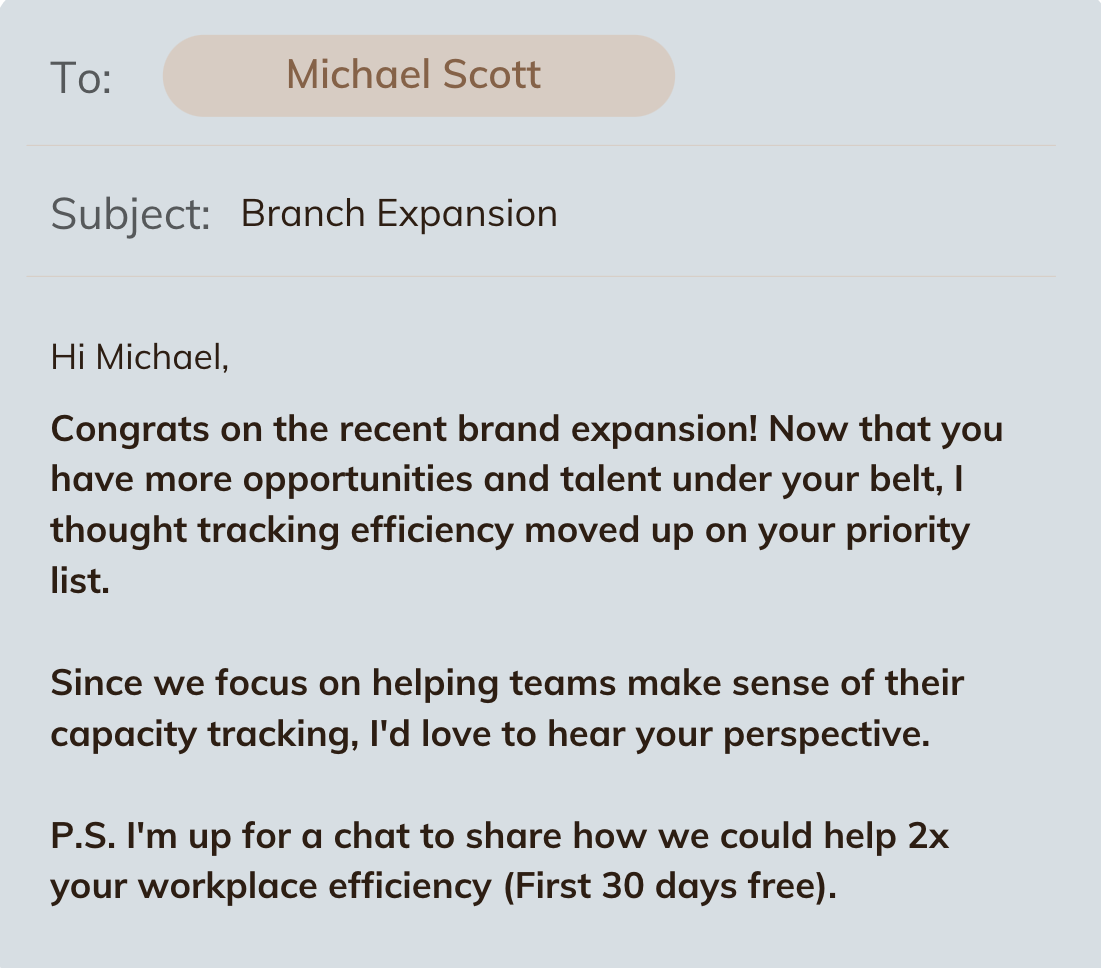
If you don’t know your buyer persona, look at the template below and use HubSpot’s questions as a foundation for building yours:

Once you’ve got the answers, you easily turn them into relevant points for your messaging and skyrocket your email outreach!
Map out your buyer’s journey beforehand
The quality of your email outreach is only the first step in building a relationship with your clients.
Once you draw attention to your brand with a quality email, the next natural step for the buyer would be to research your website. And your task is to make sure it’s here to convince and convert your client.
Some of the conversion optimization aspects include easy navigation, clearly defined offers, and high-quality customer support. Your clients won’t go to sales to find the information they need, so consider add-ons like an AI-powered chatbot by Vondy to keep the customer on your website for longer.
If you don’t have the capacity to optimize the website on your own, hiring a conversion rate optimization agency is your way out. Because, at the end of the day, it’s not just email. Your outreach works if your clients can move within your sales funnel easily.
Develop a buyer-centric messaging strategy
To boost your email outreach performance, build your messaging sequence around the customer. Product-centered messages don’t work today because your buyers have learned to use a mental spam filter and turn down emails that resemble a sales pitch.
If you’re using AI text generators for your email outreach, pay attention to the prompts you’re giving to your AI assistant. Mention that every part of your email should start with a statement about the prospect.
For example, instead of saying, “We’re the best software company in the market,” guide your AI writer by typing “We can help [Prospect’s company name] become an industry leader by doing X.”
Remember: even the best AI apps out there are as good as the prompts you’re giving them.
Craft *the* subject line
A subject line is one of the first things your client notices when they see an email in their inbox. If it’s too long, too generic, or too salesy, you’re out of the game. Even if your email was about the best offer they’d ever see.
Here are a few things to keep in mind when creating a subject line:
Keep it short and simple
According to Lavender, 1-3 words are optimal for a subject line. Keeping it between 21-60 characters leads to higher open rates compared:

Get straight to the point
It’s the only way you’ll convey your purpose in a few words. Drop the fluff and long explanations - they give out your salesy nature.
Describe what the email is about without punctuation, questions, and emojis. For example, if you’re a project management software company, using the “Workplace Efficiency” subject line is more than enough.
Bonus tip: Capitalize Each Word
That’s just some great advice from Lavender. They’ve found that capitalizing the first word only leads to a 30% drop in open rates. Crazy, right?
Give more value with fewer words
The premise is quite similar to the subject line:
The fewer words you use in email, the better your chances at replies.
When you’re sending the first messages in your email outreach sequence, the optimal number should be somewhere between 25-50 words:

Use simple and short sentences and pay attention to the white space. Starting every new thought with a new paragraph will increase your chances of getting noticed because here’s how we usually scan text-only emails and messages:

Guide potential customers directly through the process you’d like them to go through. Picture facing a copy paste not working problem on your MacBook and seeking solutions online. Which results would you favor? The lengthy, intricate ones? Or the concise, well-organized, user-friendly options? Choose quality over quantity. Help your client by offering clear, valuable guidance to solve their problems.
A/B test your messaging
You’ll be surprised how a single tweak in your message can impact the email outreach performance, especially when it comes to subject lines.
A/B testing is here to help you figure out the best tactic for your emails. Segment your email list into smaller groups, and try out different formats and messaging.
Once you see which ones perform better, you can proceed with the version that resonates with the audience and increases your open rates.
A/B testing is a must for every cold email campaign we launch because it’s the only way to see what type of sequence and messaging performs better in action.- Iurii Znak, Founder of Respect.Studio
Usually, we start with more variables for testing, analyze what tests perform better, and narrow down the options with the most positive feedback. When you follow this structure, you end up with overall better campaign results. Because you eliminate the unnecessary hypotheses along the way
Be smart about follow-ups
Today, sending a follow-up email after an abandoned email has a bad rep. Mostly because these emails almost never account for the context and contain generic messaging.
In the right hands, however, this might become your golden ticket. The research shows that cold email outreach campaigns with 3 email rounds tend to have the highest reply rates (9.2%).
Busy executives don’t have time (and desire) to remember the email you sent some time ago. But figuring out whether they were not interested or simply forgot to reply is always up to you.
A good follow-up email should include:
- A reason for reaching out
- Context of your previous conversation (if there was any)
- Relevant points for discussion (research if the company had gone through any changes since the last time you reached out)
- An engaging call to action (don’t push a demo call, start with sharing useful content or asking for their perspective)
You can also incorporate a multi-channel outreach strategy and follow up on emails with a phone call. For example, with automation tools, you can call a lead as soon as they open or click a link within your email.
Conduct regular “health checks”
- Use separate accounts and company domains for the campaign
- Warm up your new domain for 30-45 days before launching campaigns
- Make sure your email outreach is compliant with legal regulations such as GDPR, CAN-SPAM, and any other regulations relevant to the region
- Email verification is crucial for ensuring accurate and effective outreach by maintaining a clean and updated email list.
The email campaign set-up generally takes a lot of time, which could be used for ideation and performance improvement.- Pavel Pavlovsky, Co-founder & CEO at AppLiger
Today, both software solutions like Jira and templates for quick optimization allow you to win time without losing on quality. So access to these resources might be worth a try if you plan on getting serious with email outreach.
Analyze & iterate
Last but definitely not least: Never stop gathering and analyzing data from your ongoing campaigns to implement the necessary changes.
Track any correlations between your messaging and open rates, collect qualitative feedback from prospects, and change the outreach accordingly.
Once you launch your campaign, it’s not set in stone. You have the ability to do better and use the data to hit the sweet spot with your outreach.
Juggling various hypotheses is the only way to choose the best solution conversion and revenue-wise. No matter how much you know about your audience, the slightest change to copy or messaging can affect your revenue in the long run.- Glib Hodorovskyi, Co-founder & CRO strategist at Conversion Rate Store
We’ve seen it work with our clients time and time again, so data analytics and testing are the way to improve your performance.
Now that you’re aware of useful tips on improving your email outreach, let’s give you even more clarity and inspiration with some great email outreach examples.
High-Performing Outreach Email Examples
#1. A great outreach email example from Lavender that includes an observation, relevance, credibility, and intro to your solution:
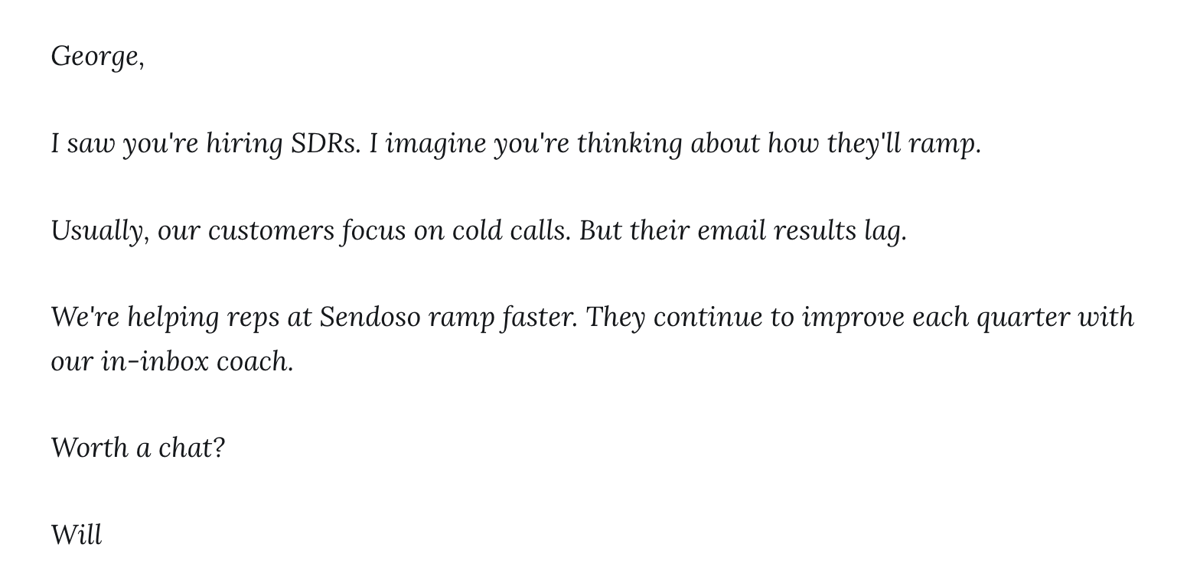
#2. An example of a non-salesy email for a first touch or follow-up with your prospect from Reply.io:

#3. Mike Gallardo’s example of a relevant email that uses the right trigger and subject matter expertise to spark a dialogue:
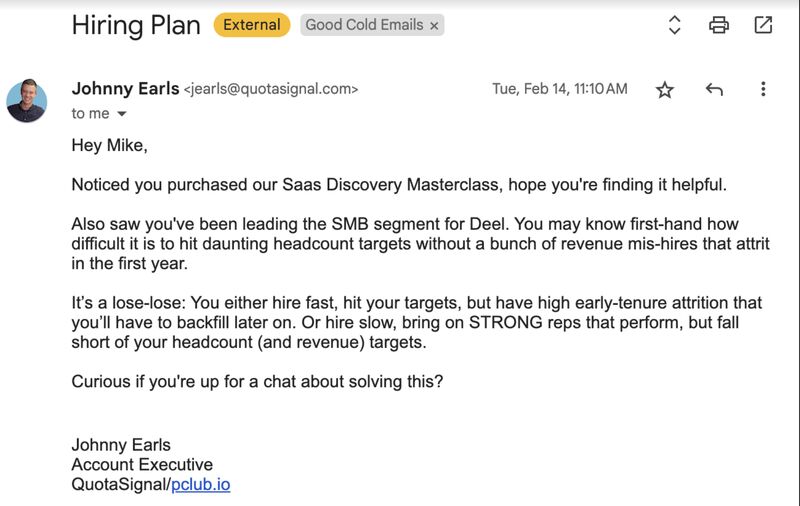
#4. Siege Media’s example of a solid personalized email, which demonstrates you’ve done your homework and are curious to hear feedback:
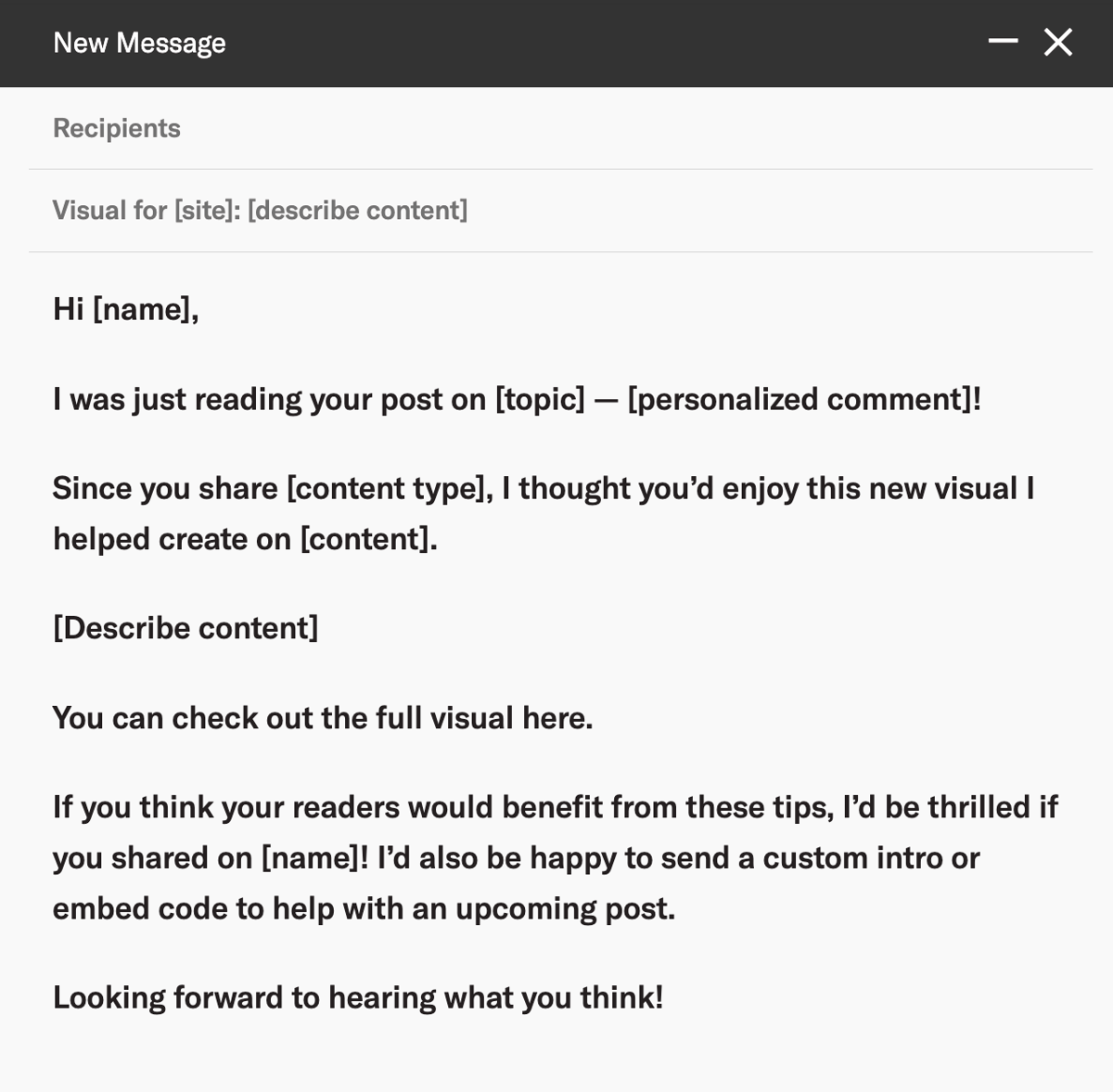
#5. Hubspot’s example of a follow-up email that adds value and relevance to your buyer:
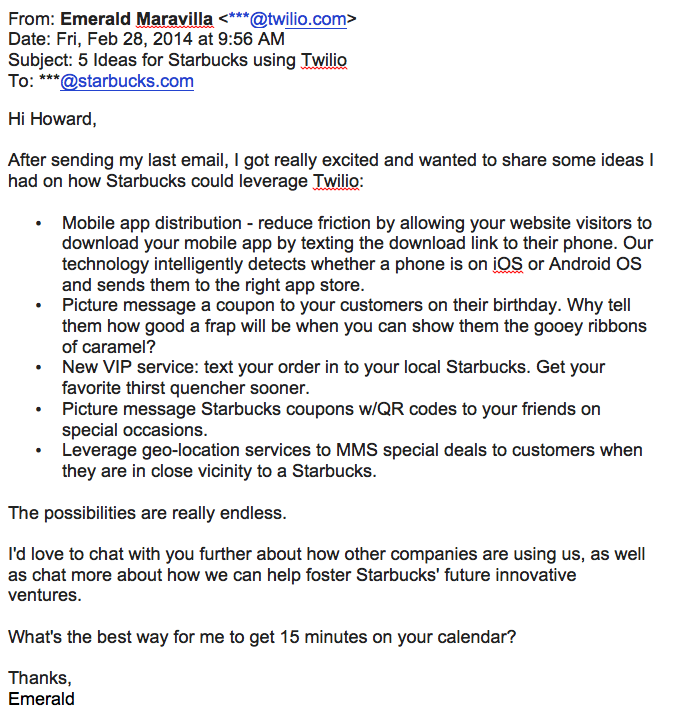
Let's sum it up
The success of your outreach email campaigns depends on many factors. But if we were to single out the most important ones, it comes down to:
- Knowing your customer
- Using simple messaging frameworks
- Speaking your buyer’s language
- Setting up the campaign right
Once you’ve got these things covered, there’s only so much to stop you on the way to getting new clients!
FAQ
What is email outreach?
Email outreach is a strategy that involves sending targeted and personalized emails to individuals and businesses with a specific goal. Goals vary across the users and can include promotion, building awareness, cold outreach, or relationship building.
How do I identify the target audience for my email outreach campaigns?
Identify your target audience by analyzing your product or service. Consider the demographics, interests, and behaviors of your ideal customers. Utilize data from your existing customer base, conduct market research, and use analytics tools to refine your target audience for more effective email outreach.
What is the recommended length of an email subject line?
The optimal length of a subject line is 21-40 characters. Some experts recommend using 1-3 words in subject lines.
What is A/B testing?
A/B testing, or split testing, involves sending two or more variations of an email to different segments of your audience to analyze which version performs better.
What metrics are the most important in tracking email outreach performance?
Key metrics for tracking email outreach performance include open rate, click-through rate, conversion rate, bounce rate, and unsubscribe rate (for newsletters and company offers).


